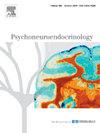TSST-OL:在线应用与实验室应用的比较以及对移情的影响。
IF 3.4
2区 医学
Q2 ENDOCRINOLOGY & METABOLISM
引用次数: 0
摘要
在线测试协议在心理学和神经科学研究中越来越受欢迎。尽管与社会功能相关,但人们对急性压力对认知和情感状态移情的影响并不清楚。最近,特里尔社交压力测试(TSST)的远程在线版本(TSST-OL)被开发出来,用于儿童和成人的研究。一般来说,TSST-OL 提供了不受环境影响的应用机会(例如,在受试者家中或实地环境中)。然而,为了利用这一机会,在不同的环境和情境变量中验证 TSST-OL 似乎至关重要。我们比较了在家中和实验室中对 TSST-OL 的压力反应性。在一个 2 × 2 的因子设计中,120 名参与者(60 名女性)在家中(60 名)或实验室(60 名)接受了 TSST-OL 和友好 TSST 的在线改编版(fTSST-OL)。压力诱导通过生理(皮质醇和唾液α-淀粉酶,sAA)和主观压力及情绪测量进行评估。受试者还在压力和控制暴露后完成了移情表现任务。结果证实,无论是在参与者家中还是在实验室中,TSST-OL 都能成功诱发压力。不过,与在家中进行测试相比,在实验室参与测试时皮质醇水平更高,这可能是由于预期压力造成的。因此,在家中应用 TSST-OL 似乎可以缓冲预期压力,从而使其成为研究实验诱导压力反应性的一种有吸引力的工具。在移情方面,积极情绪的识别(认知移情)和移情(情感移情)普遍优于消极情绪。就后者而言,这种差异在压力后消失了,表现为对积极情绪的情感共鸣减少。总之,本研究表明,TSST-OL 可诱发压力,并通过严格的研究设计、充足的参与者和相关的压力参数验证了该工具的有效性。因此,未来的研究可以将 TSST-OL 应用于不同的环境和不同的样本。关于压力下移情的研究结果与现有研究中喜忧参半的结果一致,这凸显了对移情进行进一步研究的必要性,同时考虑到了各种测量方法、刺激价位和参与者的性别。本文章由计算机程序翻译,如有差异,请以英文原文为准。
TSST-OL: Comparison between online and laboratory application and effects on empathy
Online test protocols are increasingly popular in psychological and neuroscientific research. Despite its relevance to the social functioning, the influence of acute stress on cognitive and affective state empathy is not clearly understood. Recently, a remote online version (TSST-OL) of the Trier Social Stress Test (TSST) was established for use in research with both children and adults. In general, the TSST-OL offers the opportunity for context-independent application (e.g., at the participants’ home or in field contexts). However, in order to exploit this opportunity, it seems crucial to validate the TSST-OL across different settings and contextual variables. We compared stress reactivity in response to the TSST-OL at home and in the laboratory. In a 2 ×2 factorial design, N=120 participants (n=60 women) underwent the TSST-OL and an online adaption of the friendly TSST (fTSST-OL) either at home (n=60) or at the laboratory (n=60). Stress induction was evaluated in terms of physiological (cortisol and salivary alpha-amylase, sAA) and subjective stress and affect measures. Participants also completed an empathy performance task after stress and control exposure. Results confirmed that the TSST-OL successfully induced stress both when conducted at participants’ homes and in the laboratory. Still, cortisol levels were higher during laboratory participation compared to application at home, likely due to anticipatory stress. Consequently, the TSST-OL in a home-based application seems to buffer anticipatory stress thus making it an attractive tool to study experimentally induced stress reactivity. Concerning empathy, positive emotions were generally better identified (cognitive empathy) and empathized (affective empathy) than negative emotions. For the latter, this difference was absent after stress, indicated by decreased affective empathy for positive emotions. Overall, this study indicates that the TSST-OL induces stress and validates the tool using a rigorous study design with sufficient participants and relevant stress parameters. Thus, future studies may apply the TSST-OL in different contexts and diverse samples. The findings on empathy under stress align with mixed results in existing research, highlighting the necessity for further investigations into empathy, considering various measurements, stimulus valence, and sex of the participant.
求助全文
通过发布文献求助,成功后即可免费获取论文全文。
去求助
来源期刊

Psychoneuroendocrinology
医学-精神病学
CiteScore
7.40
自引率
8.10%
发文量
268
审稿时长
66 days
期刊介绍:
Psychoneuroendocrinology publishes papers dealing with the interrelated disciplines of psychology, neurobiology, endocrinology, immunology, neurology, and psychiatry, with an emphasis on multidisciplinary studies aiming at integrating these disciplines in terms of either basic research or clinical implications. One of the main goals is to understand how a variety of psychobiological factors interact in the expression of the stress response as it relates to the development and/or maintenance of neuropsychiatric illnesses.
 求助内容:
求助内容: 应助结果提醒方式:
应助结果提醒方式:


